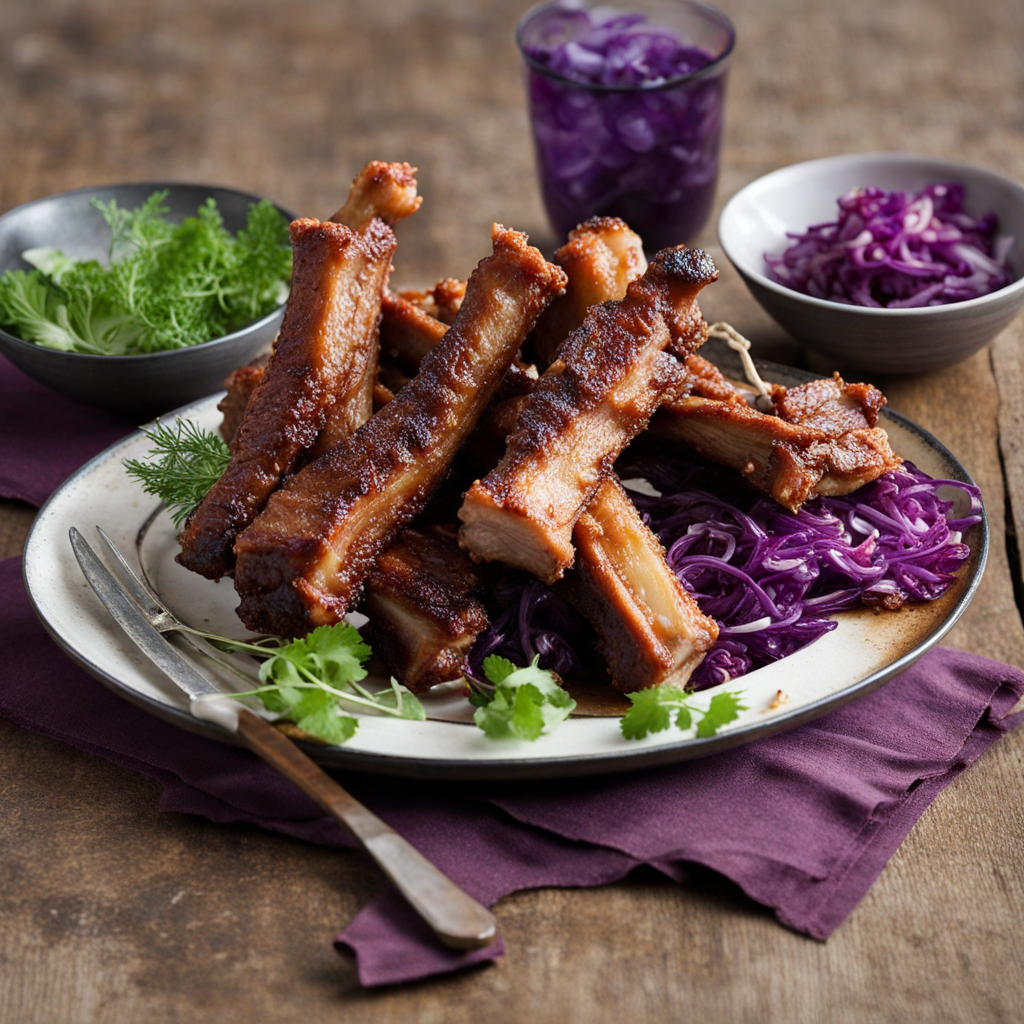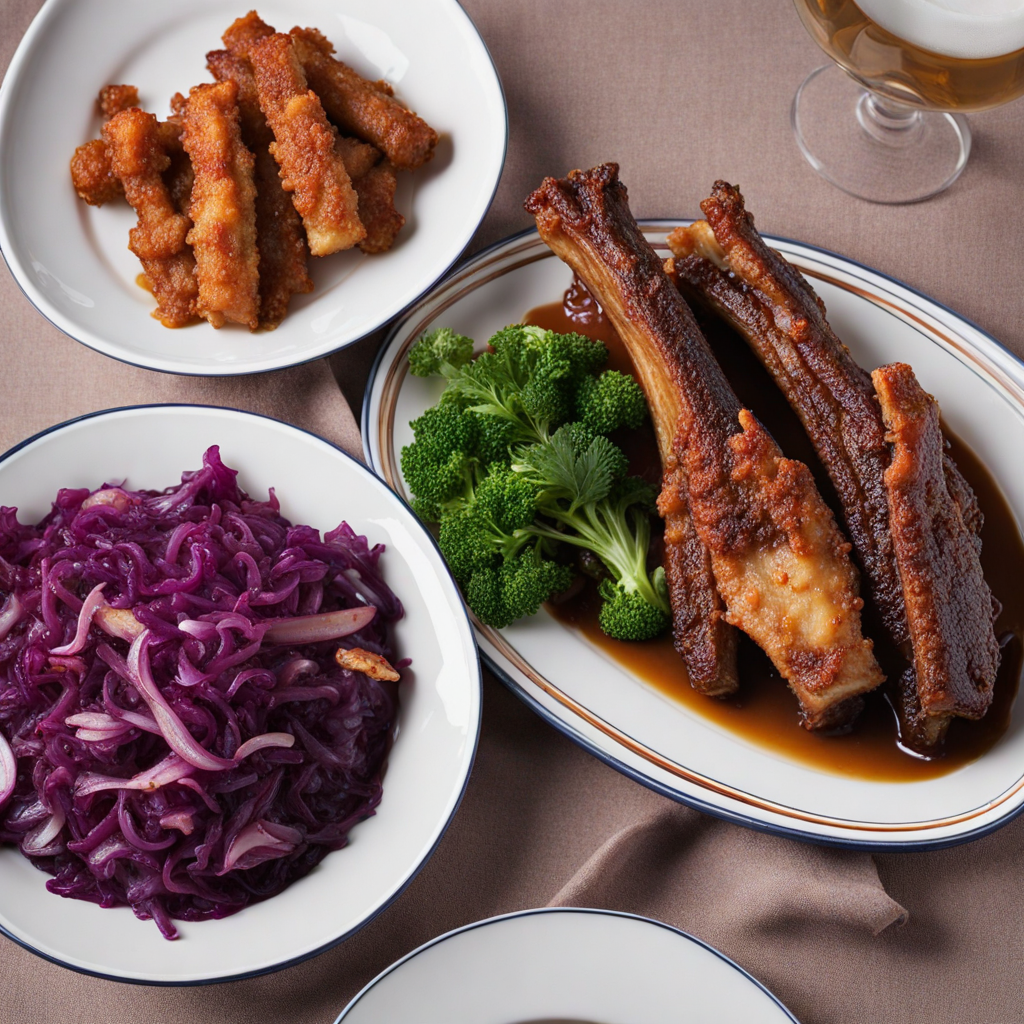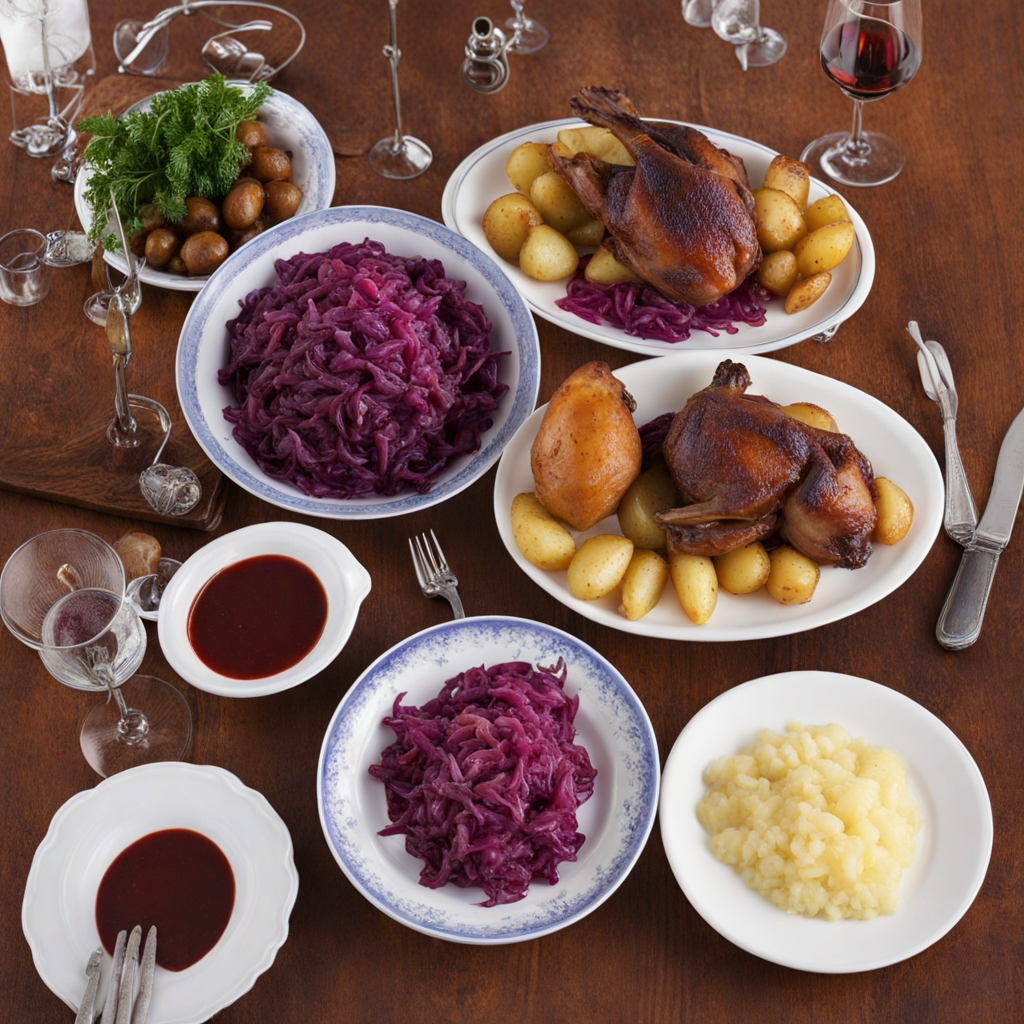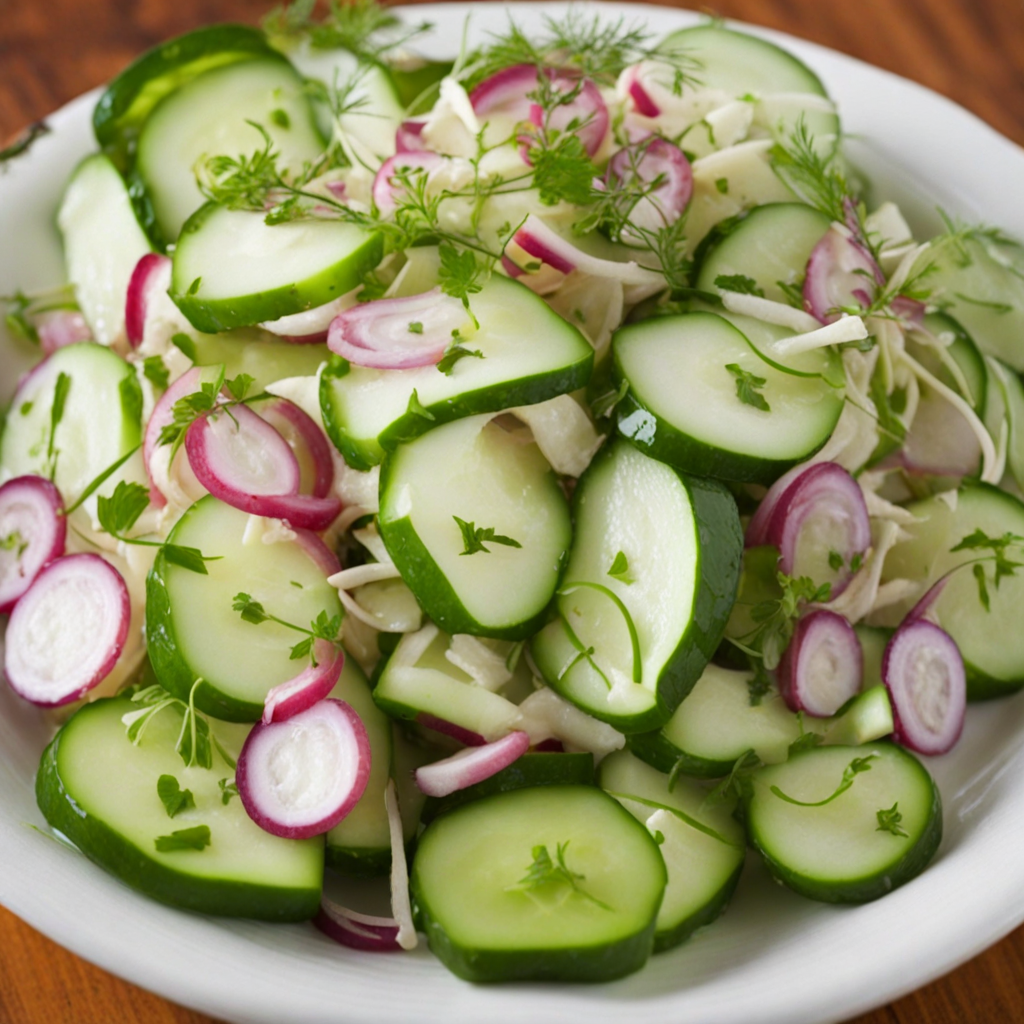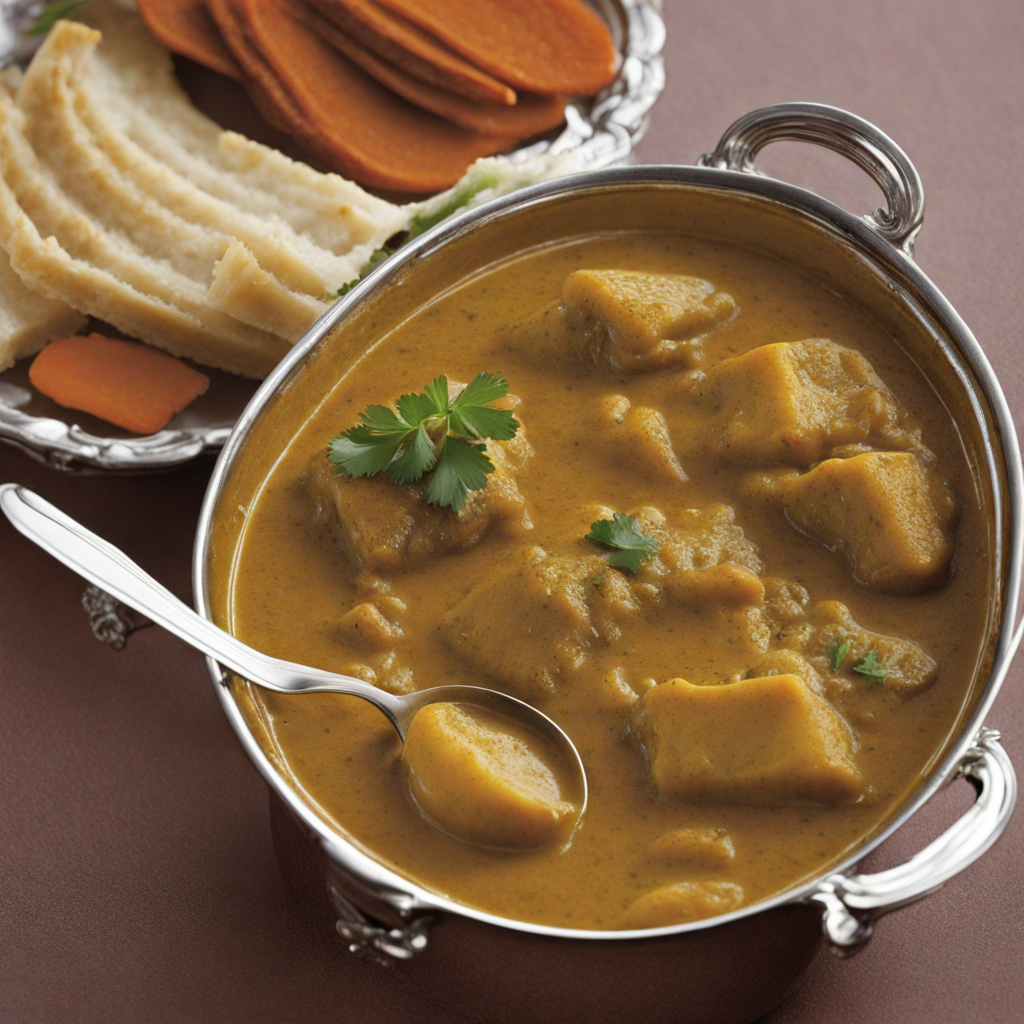Ribbenssteg
Ribbenssteg is a traditional Danish dish that embodies the rustic charm of Scandinavian cuisine. This mouthwatering roast is typically made from pork ribs, which are seasoned with a blend of salt, pepper, and sometimes a hint of garlic or herbs. The key to an excellent Ribbenssteg lies in the cooking method; it is often slow-roasted until the meat is tender and the fat has rendered down, resulting in a crispy layer of crackling on the outside. This delightful contrast between the savory, juicy meat and the crunchy skin makes every bite an unforgettable experience for the palate. The preparation of Ribbenssteg often involves marinating the pork ribs to infuse them with flavor before they are placed in the oven. Some variations incorporate a sweet glaze made from ingredients like honey or brown sugar, which caramelizes beautifully during cooking and adds a rich depth to the dish. Served typically with traditional Danish sides such as creamy potatoes, red cabbage, or pickled vegetables, Ribbenssteg offers a perfect balance of flavors that reflects the simplicity and heartiness of Danish home cooking. This dish is not just a meal; it represents the Danish culture of gathering and enjoying food with family and friends. Often served during festive occasions or Sunday dinners, Ribbenssteg is a beloved staple that invites diners to savor the moment. Whether you are experiencing it for the first time or revisiting a cherished memory, the taste of Ribbenssteg is sure to leave a lasting impression, making it a must-try for anyone eager to explore the rich culinary landscape of Denmark.
How It Became This Dish
The History of Ribbenssteg: A Danish Culinary Tradition Ribbenssteg, a traditional Danish dish, is a succulent roast typically made from pork belly or rib cuts. This beloved dish has deep roots in Denmark’s culinary history, reflecting the country’s agricultural heritage, cultural exchanges, and evolving culinary practices. #### Origins of Ribbenssteg The origins of Ribbenssteg can be traced back to rural Denmark, where pigs were raised predominantly for their meat. Since ancient times, pig farming has been a vital part of Danish agriculture, and it remains an integral aspect of the Danish way of life. The pig, often referred to as "the farmer's friend," provided sustenance, not only in the form of meat but also through its fat, which was used for cooking and preserving. The word "ribbenssteg" derives from "rib," referring to the cuts of meat taken from the rib section of the pig, and "steg," which means roast. It is a dish that exemplifies the use of local ingredients and traditional cooking methods that have been passed down through generations. The practice of roasting meat dates back to Viking times, with methods evolving as culinary techniques were introduced through trade and cultural exchanges with other European nations. #### Cultural Significance Ribbenssteg is more than just a meal; it represents Danish culture and hospitality. Traditionally, it is served during festive occasions, family gatherings, and especially during the winter holidays. The dish is often accompanied by a variety of side dishes, including caramelized potatoes, red cabbage, and a rich gravy made from the drippings of the roast. This combination is not only a feast for the palate but also a reflection of Danish values centered around community and togetherness. In Danish culture, food is often at the heart of celebrations. Ribbenssteg is synonymous with the concept of "hygge," a term that embodies coziness, comfort, and the joy of being together. The act of preparing and sharing a meal like Ribbenssteg serves to strengthen family bonds and create lasting memories. #### Preparation and Cooking Techniques The preparation of Ribbenssteg is a labor of love, requiring time and care. The cut of pork is typically seasoned with salt, pepper, and sometimes a mix of herbs and spices. The skin is often scored to allow for a crispy crackling finish, which is one of the defining features of a well-prepared Ribbenssteg. Cooking methods have varied over time, but the most traditional approach involves slow-roasting the pork in an oven. The low and slow technique allows the fat to render gradually, resulting in tender meat that melts in the mouth, while the skin becomes crisp and golden. In more contemporary kitchens, some cooks might use a combination of roasting and grilling to achieve the desired texture and flavor. #### The Evolution of Ribbenssteg As Denmark has modernized and globalized, Ribbenssteg has also seen adaptations that reflect changing tastes and cooking technologies. While the traditional recipe remains popular, contemporary interpretations may include different marinades or glazes, incorporating influences from international cuisines. Additionally, the rise of the farm-to-table movement and a growing interest in sustainability have led many chefs and home cooks to source their pork from local farms, ensuring that the meat is of high quality and ethically produced. This trend not only supports local economies but also enhances the flavor and freshness of the dish. #### Ribbenssteg in Modern Danish Cuisine In recent years, Ribbenssteg has gained recognition beyond Denmark’s borders, as Danish cuisine has been spotlighted on the global stage. Danish restaurants, particularly those in Copenhagen, have embraced traditional dishes while simultaneously innovating and elevating them. Chefs have experimented with plating, flavor pairings, and presentation, introducing Ribbenssteg to a new generation of food enthusiasts. Furthermore, the popularity of New Nordic cuisine, which emphasizes local ingredients and traditional cooking methods, has reinvigorated interest in Ribbenssteg. This movement encourages chefs to explore the rich history of Danish food while pushing the boundaries of creativity and flavor. #### Conclusion Ribbenssteg is not merely a dish; it is a symbol of Danish identity, history, and culture. From its humble origins in rural farms to its place on the tables of festive celebrations, Ribbenssteg encapsulates the essence of Danish culinary tradition. As it continues to evolve, this dish serves as a reminder of the importance of community, sustainability, and the joys of sharing a meal with loved ones. In a world increasingly dominated by fast food and convenience, Ribbenssteg stands as a testament to the enduring value of traditional cooking methods and the rich cultural heritage that shapes Denmark’s culinary landscape. As more people discover the beauty and flavor of this beloved dish, Ribbenssteg will undoubtedly continue to play a significant role in the tapestry of Danish cuisine for generations to come.
You may like
Discover local flavors from Denmark


